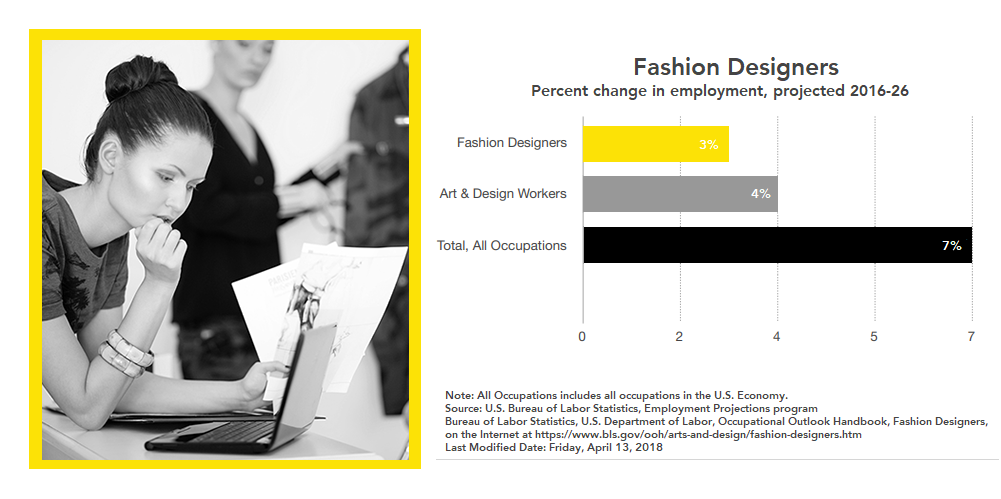
Articles

2018 McKinsey & Company and The Business of Fashion Annual State of Fashion Report
Last year, McKinsey & Company and The Business of Fashion set out to transform the level of debate about fashion by providing a foundation for rigorous in-depth research and analysis of the global fashion industry, focusing on the themes, issues and opportunities driving the sector and its performance. Now, we are publishing our 2nd annual report. Over the past months we've again put together an unrivalled global network of experts, research and analysis to bring you a report that makes sense of fashion’s myriad segments, categories and geographies.
Our aim remains threefold: to establish a common understanding of the forces that are shaping the industry; to provide clarity and transparency on the industry’s performance; and to set the agenda for the topics that should be top of mind for business and creative leaders in 2018. By bringing together our two organisations, we have pooled resources to draw on BoF’s deep industry expertise and insider access alongside McKinsey’s functional, analytical and industry insight to offer a rare blend of quantitative rigour and sharp-eyed qualitative insights about the fashion sector. This year we surveyed more than 200 senior industry executives around the world and conducted in-depth interviews with some of the most influential and forward-thinking people in the industry, including Chip Bergh, president & chief executive of Levi Strauss & Co; Richard Liu, founder and chief executive of JD.com; Tory Burch, chief executive and designer of Tory Burch; Dame Ellen MacArthur, founder of the Ellen MacArthur Foundation; Victor Luis, chief executive of Tapestry Inc; and Marco Bizzarri, chief executive of Gucci. If you’re engaged in the business of fashion – in the boardroom, as an entrepreneur building a startup, or even as an informed shopper on the high street – this report will tell you what you need to know about the business trends shaping our industry’s future.
This report includes the second readout of our industry benchmark: the McKinsey Global Fashion Index (MGFI). With a database of nearly 500 fashion companies, this index will allow for analysis and comparison of how a fashion company is performing against others in its market segment and product category, and this year we have also added a regional view. Already, the data set has grown and is becoming ever-more valuable as a source of insight into both the pressures on fashion and the opportunities emerging from the world’s increasingly turbulent fashion markets.
Last year we made predictions about how the fashion world would pan out in 2017. In this report we make a new set of predictions for the year ahead rooted in the 10 trends we have identified across the global economy, consumer shifts and the fashion system, that are overarching, interconnected forces that will drive and shape the trends in years to come. The fashion industry is turning a corner. Looking towards 2018, there is a new sense of optimism in an industry plagued by uncertainty. And while “uncertain” and “challenging” remain the most common words that executives in the BoF-McKinsey Global Fashion Survey have used to describe the state of the industry this year, right behind them in third place is “optimism.”
The McKinsey Global Fashion Index forecasts industry sales growth to nearly triple between 2016 and 2018, from 1.5 percent to between 3.5 to 4.5 percent. But the rebound is not being felt evenly across the globe. In fact, 2017 signals the end of an era. The West will no longer be the global stronghold for fashion sales. In 2018, an important tipping point will be reached when, for the first time, more than half of apparel and footwear sales will originate outside of Europe and North America, as the main sources of growth are emerging market countries across Asia-Pacific, Latin America and other regions. Not surprisingly, this is also reflected in fashion executives’ sentiments, as respondents from emerging markets are more optimistic about the industry’s outlook in 2018.
This outlook varies across value segments too. The ongoing polarisation of the industry with consumers trading up or down from mid-market price points continues to create headwinds for mid-priced fashion players while those operating in the luxury, value and discount segments further pick up speed. What is new is that the absolute luxury segment is accelerating alongside affordable luxury.
These developments take place at the same time as the fashion industry is undergoing other transformative shifts. Alongside consumers’ adoption of digital are raised expectations of customer experience and a higher scrutiny on convenience, price, quality, newness and a personal touch. Leading players are therefore creating innovative business models, using granular customer insights as a source of differentiation and pushing the limits of their end-to-end product development process. The performance gap between frontrunners and laggards continues to widen: from 2005 to 2015 the top 20 percent of fashion companies contributed 100 percent of the economic profit, while in 2016 the top 20 percent contribution had increased to 144 percent.

business of fashion: top 10 trends that will set the agenda for the global fashion industry in 2018
1. Predictably unpredictable: Geopolitical turmoil, economic uncertainty and unpredictability are the new normal. Fashion companies and executives must continue to be vigilant and nimble in order to adapt to an ever-changing environment but they will increasingly focus on directing their energies towards what is within their control.2. Globalisation reboot: Despite the rise of nationalism, isolationist rhetoric and reshoring, globalisation will not stall. A new phase of globalisation characterised by the exponential growth of cross-border bandwidth, connectivity and digital data flows will alter the global playing field and give certain players a competitive edge.
3. Asian trailblazers: With two thirds of the world’s e-commerce unicorns, more than half of global online retail sales, and countless digital and tech innovations, Asia is no longer waiting for Western companies to step up. Asian players will assert their power and leadership even more through pioneering innovations and global-scale investment and expansion.
4. Getting personal: Personalisation and curation will become more important to the customer. As consumer values coalesce around authenticity and individuality, brands will value data even more to tailor recommendations, engage influencers and personalise experiences. The fashion companies that flourish will re-focus on their strengths.
5. Platforms first: Consumers will increasingly look to online platforms as the first point of search, attracted by their convenience, relevance and breadth of offering. Whether mass, specialist or premium, platforms will continue to grow in scale and reach compelling fashion brands to find ways of engaging more with these powerful sales channels. The question for fashion brands is no longer “if” but “how” to collaborate with big online platforms.
5. Mobile obsessed: As consumers’ obsession with mobile grows, the end-to-end transaction will also move to mobile. With an overabundance of mobile payment solutions already available globally, consumers will expect fashion companies to cater for increasingly convenient mobile transactions.
7. AI gets real: Leading innovators will reveal the possibilities of artificial intelligence across all parts of the fashion value chain, exploring new ways of creating value for those employed in the fashion industry. AI enhancements will go beyond the traditional areas of machine tasks into creative and customer interaction processes, blurring the line between technology and creativity.
8. Sustainability credibility: Sustainability will evolve from being a menu of marketing-focused CSR initiatives to an integral part of the planning system where circular economy principles are embedded throughout the value chain. More fashion brands will plan for recyclability from the fibre stage of the supply chain and many will harness sustainability through tech innovation in order to unlock efficiency, transparency, mission orientation and genuine ethical upgrades.
9. Off-price deception: Off-price sector growth continues to be driven by the notion that it provides a solution to challenges like excess stock and slow growth, but the US market serves as a warning about saturation and possible sales cannibalisation. As Europe and Asia get hooked on the myth of an off-price ‘panacea,’ the fashion industry could be put at risk of margin erosion unless companies carefully consider their off-price channel strategies.
10. Startup thinking: Due to an urgent and intense need for innovation across the industry, a growing number of fashion companies will aim to emulate the qualities of startups such as agility, collaboration and openness. Traditional and heritage players will continue to be compelled to open their minds up to new types of talent, new ways of working, new kinds of partnerships and new investment models.

PROJECT RUNWAY EFFECT: Fashion Designers Unmatched By Job Opportunities for Graduates
About $250 billion is spent on fashion in the US each year, with annual revenue adding up to more than $20 billion. But despite the huge desire for new clothing, the supply of fashion designers is greater than demand with an ever-growing number of budding designers unmatched by a corresponding increase in fashion design jobs. Experts have dubbed this phenomenon the “Project Runway Effect.” The popularity of fashion careers is also growing as social media brings it greater exposure, with Instagram models and Facebook fan pages that glamorize such jobs.According to the Council of Fashion Designers of America and the Department for Education, there were 17,370 “fashion designer” jobs in the US in 2013. Each year, about 10 percent of the total job pool graduates from undergraduate programs and enters the industry, creating oversupply, says the Business of Fashion. And over in the UK, more than 30 colleges and universities offer fashion degree courses in addition to private institutions such as the Condé Nast College of Fashion and Istituto Marangoni (which also has campuses in Milan, Paris and Shanghai).
Either via attrition or market growth, the US fashion sector would have to employ 1,700 new fashion design graduates each year, but the gap between the number of wannabee designers are jobs continues to grow. Marie Hunt, owner and designer at New Jersey-based bridal boutique Headpiece.com, attended the Fashion Institute of Technology in the early 1980s, when job prospects were stronger than today. But no one handed her work upon graduation either.“When it was time to apply for jobs I would pass by the Career Center to see if there were any job postings on the bulletin board. I don’t recall ever seeing anything available in my specialty of intimate apparel. I had to approach the job world basically on my own,” she says. “No cell phones, no email, no internet, just the Yellow Pages and directories that you actually had to comb through to find companies and research their area of design.” But, she adds, “I went on 14 interviews and was offered 12 positions. My FIT degree and awards were very valuable in getting me in the door.” After graduating from design school, Hunt worked as a designer for International Playtex. After having her first child, she decided to stay at home and started her bridal business out of her home. In 1999 when her third child began school, she opened her retail showroom in Pompton Plains, New Jersey, welcomed celebrities including actress Tara Reid and saw her business featured on the covers of bridal magazines. Parsons School of Design in New York City student Caroline Volz says that having a top design school on your resume opens an incredible amount of doors. I applied to a lot of top fashion houses for internships after graduating from Gettysburg College with a fine arts degree and most people never got back to me despite my pestering. But, once I had that Parsons connection, I was having to turn down a number of internship offers,” she says. And, despite the competition for jobs, she is confident about her prospects. “Once you make connections and have a number of internships under your belt, I would presume it’s not too hard to get hired,” she says. Today, BA tuition fees come in at an average of $18,000 per year while MA tuition costs upward of $23,000 per year. Yet in 2010, people with fashion-related jobs were typically paid less than the average for all occupations, at around $45,000 a year. At Parsons tuition alone costs about $21,000 a year. The entire course will cost Volz more than what most designers make in a year. Each studio class that she takes also costs her between $100 and $200 in supplies, and Volz anticipates that amount will rise this semester, when she starts creating garments for her portfolio using higher end materials. Students are looking for an adequate return on their investments, and a degree from fashion design schools like FIT or Parsons are expected to provide that—but others say that even the top institutions could be giving students false hope.
The Business of Fashion recently released its Global Fashion School Rankings—the first list of the top 21 institutions in the world for a fashion-related BA. It is based on data pulled from fashion schools, surveys of more than 4,000 students and alumni, and feedback from human resource professionals and global influencers. Among the best undergraduate schools, Central St. Martins was top, which has an expansive list of respected alumni including Stella McCartney and Riccardo Tisci. Bunka Fashion College in Tokyo came in second place and Kingston University took third. For the master’s programs, British schools Royal College of Art and CSM took the first and second spots, while Royal Academy of Fine Arts Antwerp in Belgium placed third. Upon graduation, students largely reported dissatisfaction with their jobs. Many took roles outside of fashion, admitting that they felt unprepared to retain full-time employment or start their own business because they had not received practical training in areas such as business management. Just 57 percent were satisfied with careers services, and 53 percent with networking events. Only 49 percent were satisfied with the quality of recruiters on campus and 58 percent with the business training offered to them. Just over half of the students, 54 percent, were satisfied with work placement opportunities and even fewer, 44 percent, of students were satisfied with teaching on sustainability in the curriculum. The most reputable schools, including Central Saint Martins and The Royal Academy of Arts in Antwerp received scored among the lowest. A recent CSM graduate commented in the survey, “It’s one of the most prestigious schools in the world when it comes to fashion and just that in itself opened a lot of doors for me. There is a lot of controversy around the training at CSM, though—like the fact that we didn’t have one single technical class or business course throughout our BA. If you want to have that, you are told, you can go somewhere else.” Another respondent said, “Brilliant school, brilliant exposure, zero help afterwards. Based on your own intuitions to get a job, no agencies or industry links provided.” Though some students blame over-enrollment, not everyone agrees with this assessment. Volz says the Parsons career development department isn’t exactly helpful, noting that she got her most recent internship at Tory Burch by networking, and cautions that students will have to put in plenty of work to land themselves a position. “You may have a phenomenal portfolio but if you don’t have the personality and work ethic to match the company then you’re just out of luck,” she adds. “I imagine it would be really disheartening for people having to put themselves through school, thinking they are about to work in this glamorous industry, then only find out how incredibly tough and competitive it is. On top of all of that, talented designers make very little money. “I think a lot of people don’t fully realize what it takes to be a designer,”she adds. “It’s one hell of a long and expensive process, but if you’re really passionate about it, then it’s definitely worth the time.” Hunt adds that even talented budding designers cannot sit back and hope that they will be noticed. “You’ve been given a gift…the designer brain, as I call it. Don’t expect someone or some department to land you a job. Make yourself stand out, let your passion show through and use your designer brain to do the unexpected.”









